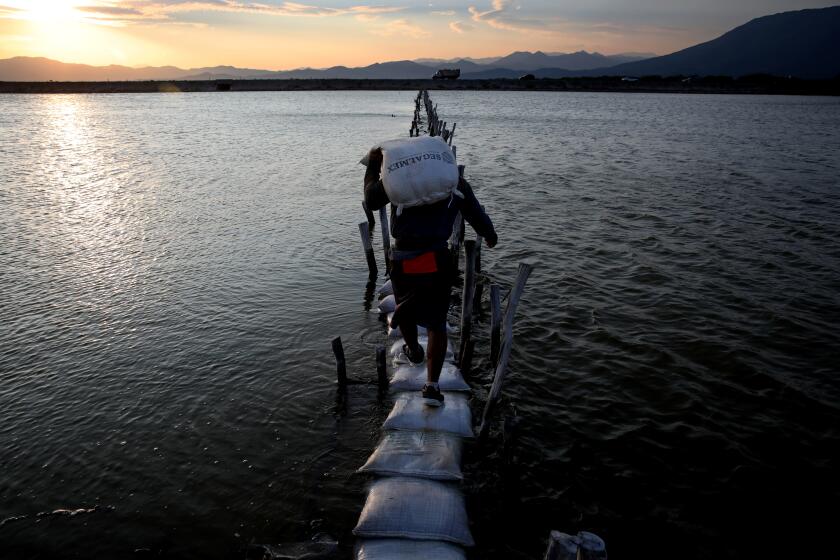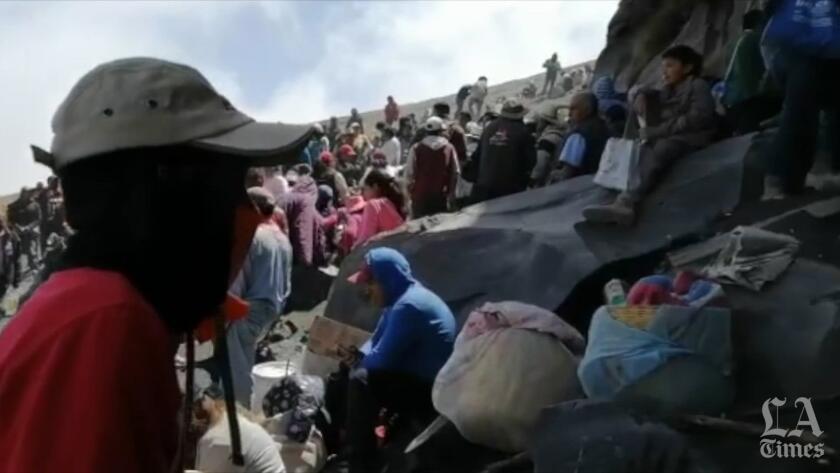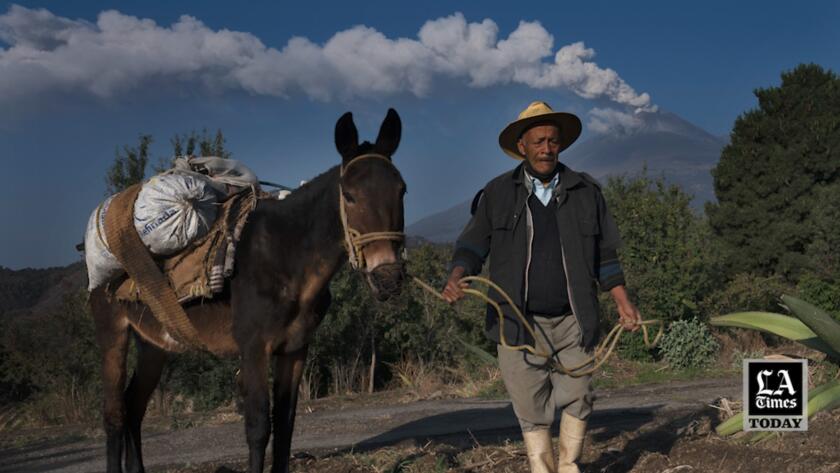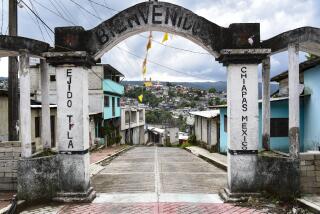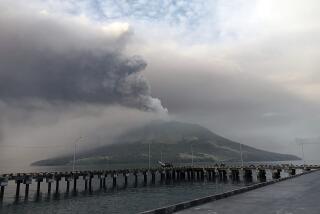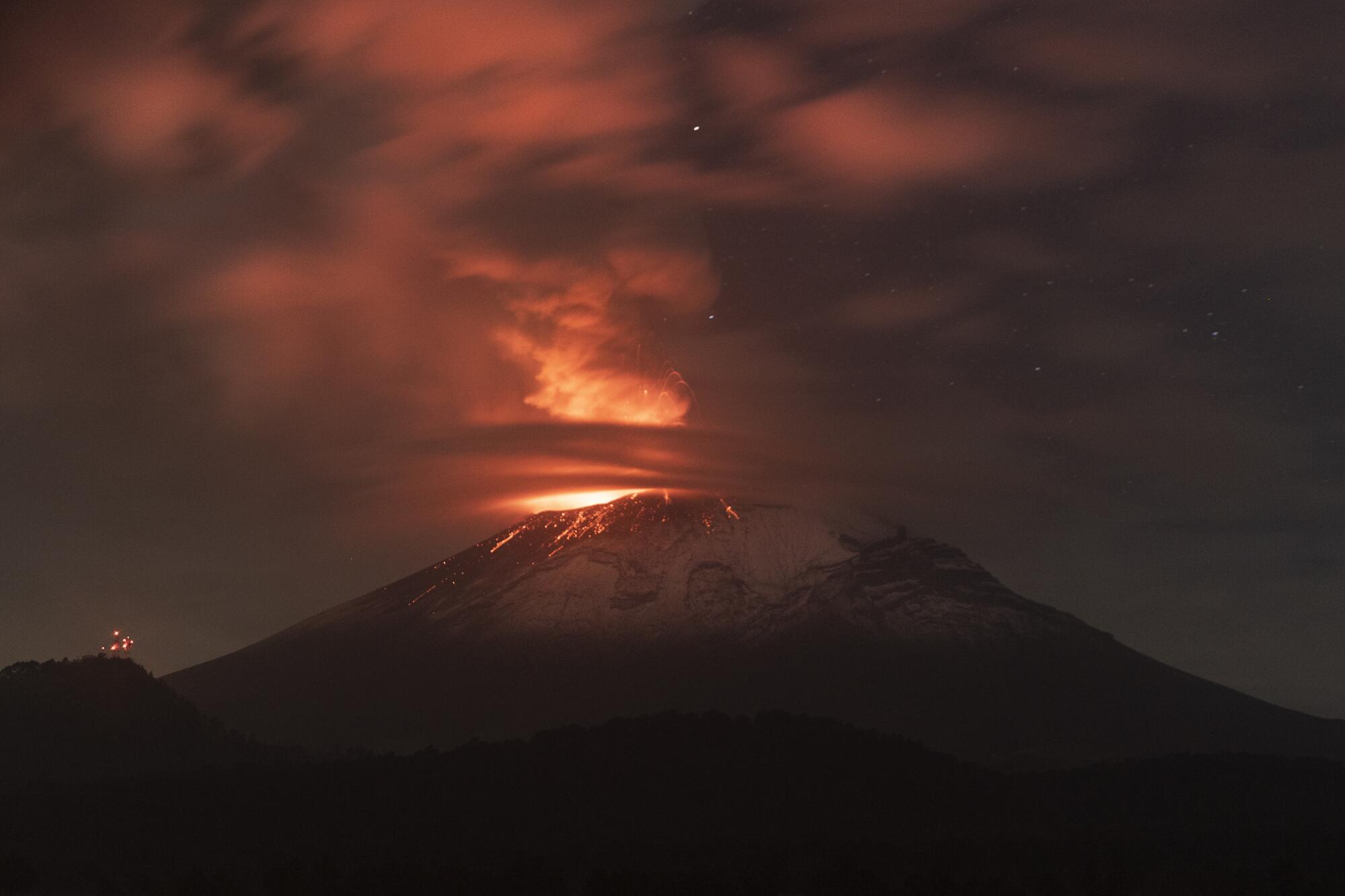
- Share via
SANTIAGO XALITZINTLA, Mexico — Each spring, residents of this village tucked at the base of one of the world’s most dangerous volcanoes trek up to a cave near its crater to make a peace offering.
Their gifts of fruit, flowers and turkey cooked in sweet mole are meant to placate Popocatépetl, the nearly 18,000-foot-high volcano viewed by many here not just as a geological wonder, but also as a mythological being whose whims have long shaped the lives of those in its shadows.
These days, the consensus among villagers is clear: Popocatépetl isn’t happy.
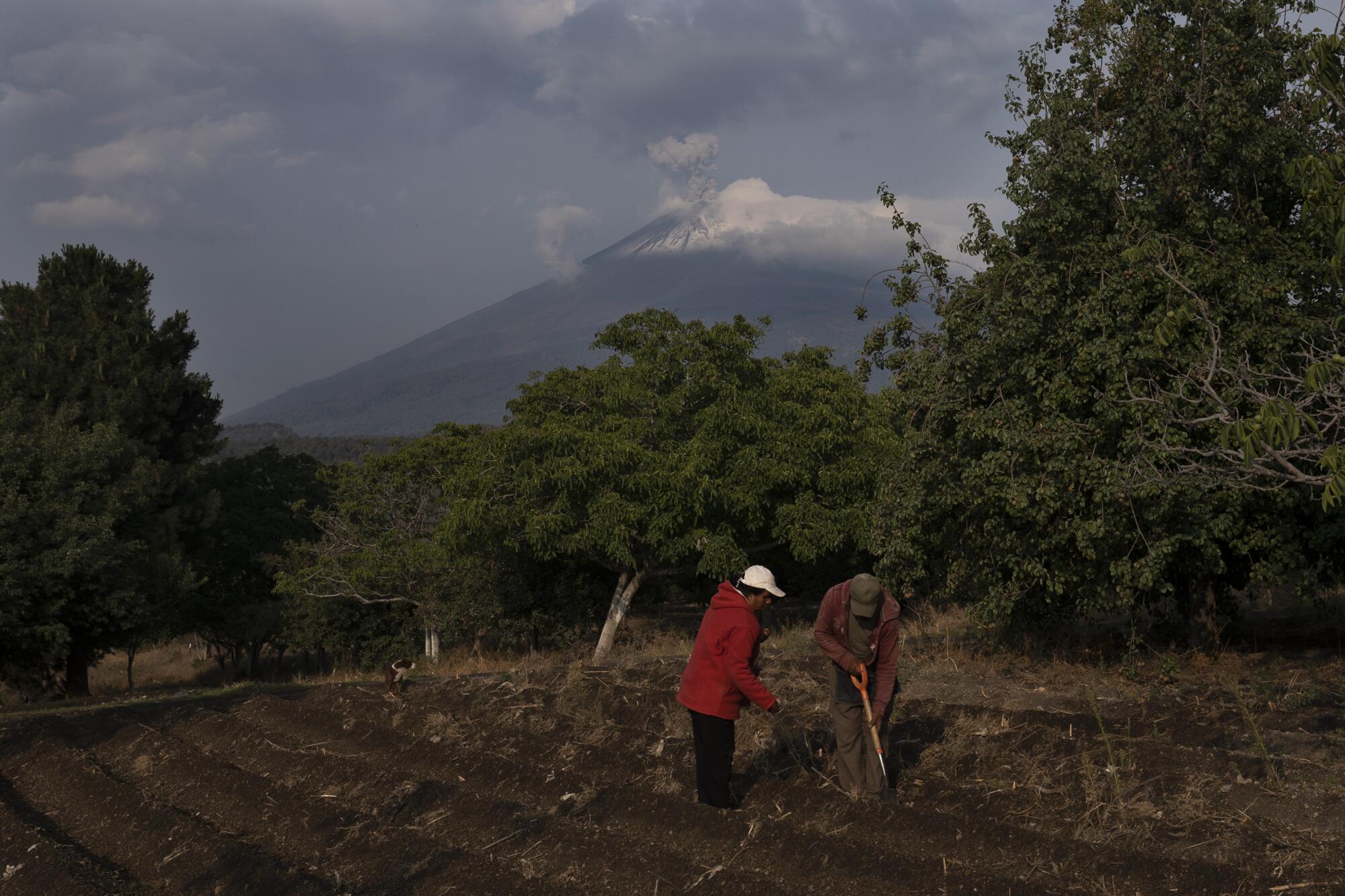
For months now, the volcano has been spewing molten rock and shooting massive columns of ash into the sky.
The eruptions have grown bigger and more frequent in recent weeks — rattling homes with wheezing exhalations that residents compare to steam escaping from a pressure cooker. Bone-gray ash blankets everything: cars, crops and even the dogs that beg for scraps in the streets.
Each spring, hundreds of gay cowboys gather in Zacatecas for a convention that celebrates sexual freedom and romanticizes Mexico’s rural past.
The sheer quantity of ash — a mixture of rock, mineral and glass particles from deep inside the volcano — has prompted officials to ground thousands of flights at airports in nearby Mexico City and Puebla and to suspend school in nearly two dozen municipalities.
On Sunday, officials raised the volcano threat level to “Yellow Phase 3,” which calls for those who live nearest to the volcano — including the 2,000 residents of Santiago Xalitzintla — to prepare for possible evacuation.
Although the volcano appears to be more active now than it has been in the last two decades, there is no indication that catastrophic eruption is underway, said Ana Lillian Martín del Pozzo, a volcanologist at the Geophysics Institute of the National Autonomous University of Mexico. It has been centuries since the volcano last expelled a significant flow of lava.
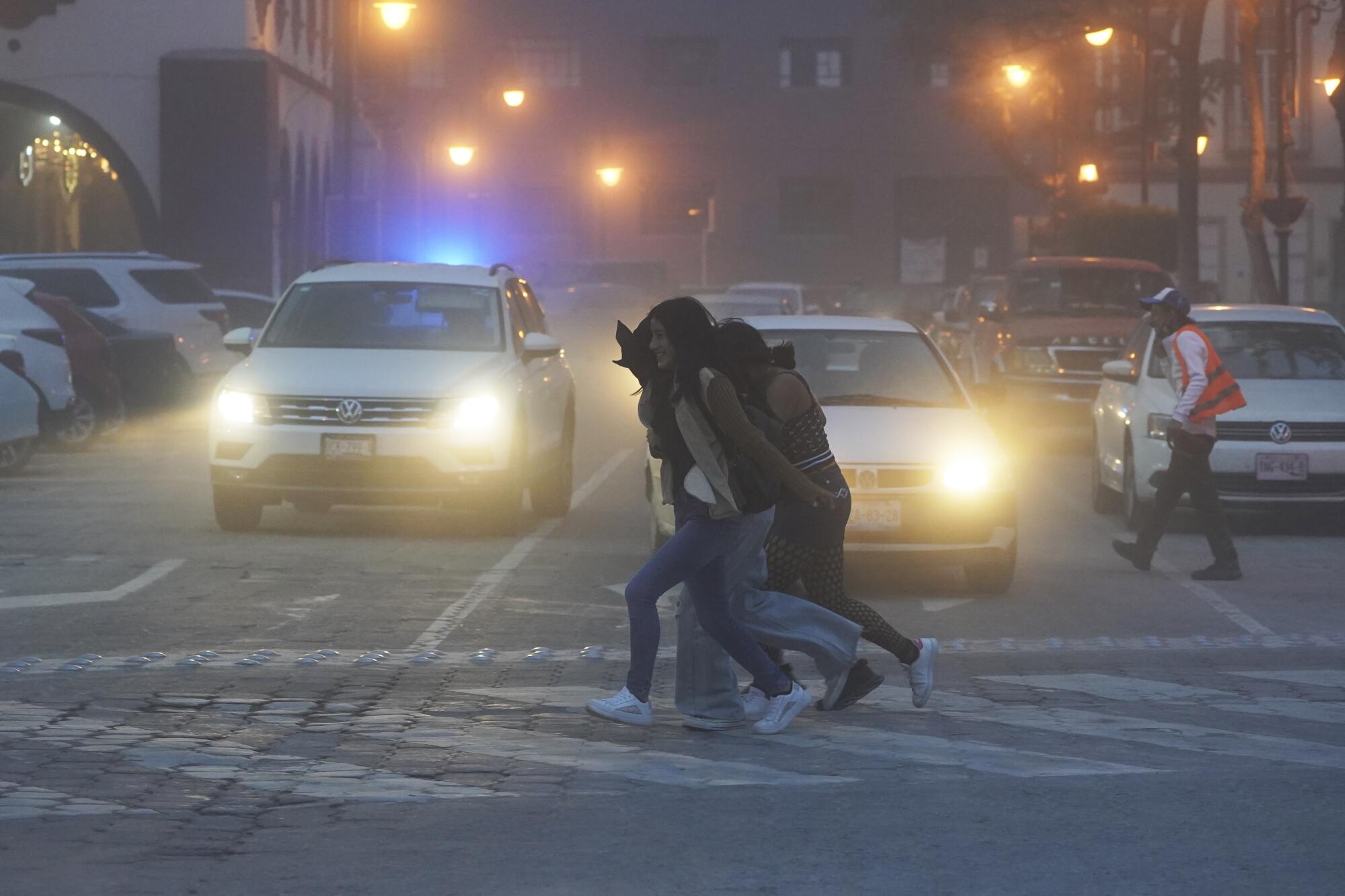
Still, the volcano’s long history of destructive explosions and the 24 million people who reside within 60 miles of its crater make Popocatépetl an acute threat. Authorities aren’t taking any chances.
Scientists are monitoring seismic activity, testing the chemical content of the ash and probing other metrics that predict volcanic activity. The federal government has mobilized 7,000 troops in case an evacuation becomes necessary.
As geology fans gape at video feeds that show incandescent rocks blowing from El Popo’s peak, those who live along its flanks have watched with respect and a noteworthy lack of trepidation.

Residents went on with their scheduled celebration of a saint’s day over the weekend, dancing to a live band as flurries of ash fell, dusting the streets with what looked like snow.
And although many complain of sore throats, coughs and irritated eyes, they have mostly continued tilling the earth, tending their horses and otherwise going about life as usual.
“We’re used to it,” said Nazario Galicia, an 81-year-old farmer who on a recent afternoon was feeding his donkeys even as truckloads of national guard troops descended on the village to sweep up ash. “Our grandparents lived with the volcano, and their grandparents lived with it too.”
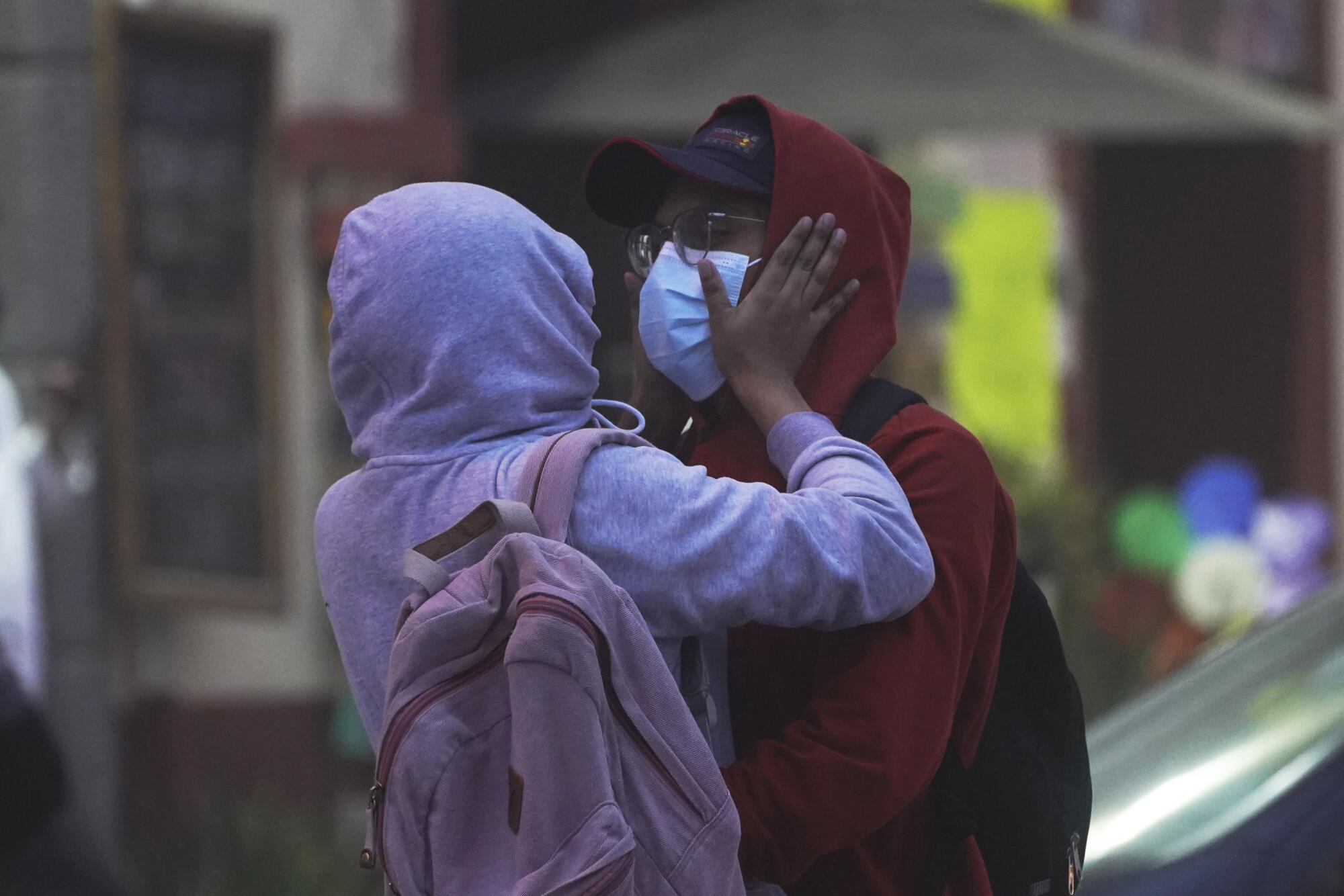
Like many people here, Galicia believes the volcano is a kind of deity — they call him Don Goyo — whose behavior is closely linked to human activity.
Galicia wondered whether the powerful eruptions in recent days were occurring because townsfolk had been unable to bring their annual offering this spring, when milder bursts from the volcano ruled out an ascent. Or maybe, he said, the volcano was responding to current events, airing its discontent with Mexico’s high levels of violence and corruption.
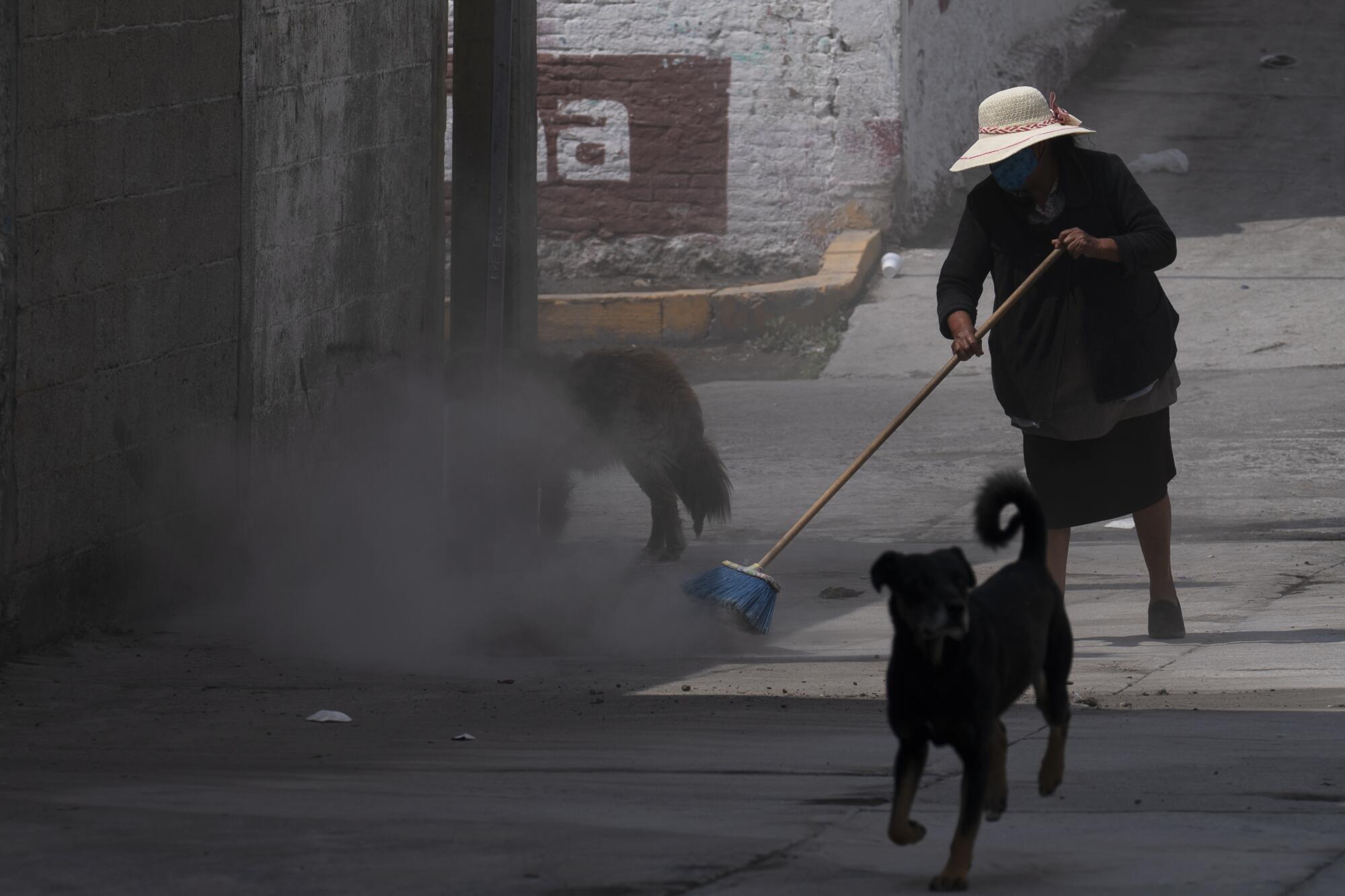
Popocatépetl and a nearby volcano, the relatively dormant Iztaccihuatl, have loomed large in Mexican mythology since at least the time of Aztecs.
Despite spiraling violence and a stagnating economy, Mexican President Andrés Manuel López Obrador has maintained sky-high approval ratings because he speaks to the working poor.
According to one popular myth, they were formed after ill-fated lovers — the warrior Popocatepetl and the princess Iztaccihuatl — died tragic deaths and were turned into stone.
Popocatépetl’s explosions have displaced humans in the past. Archaeologists say a pre-Hispanic settlement not far from Santiago Xalitzintla was buried twice by ash long before the Europeans arrived in Mexico.
The volcano was dormant for about half of the last century but rumbled back to life with a series of relatively small eruptions beginning in the 1990s.
The government ordered evacuations then, and some locals moved away. But most residents returned, adopting new practices such as covering water and food supplies for farm animals to prevent contamination from falling ash. Many, too, have embraced a kind of steely humor to cope with living alongside an ever-present threat.
- Share via
Residents of Santiago Xalitzintla, Mexico, a village at the base of the Popocatépetl volcano, trek up to a cave near its gaping crater to make a peace offering.
“We hope it calms down,” said Juana Hernández, 55, as she finished off her tacos near the town’s plaza one afternoon this week. “If not we’ll have to bring an offering.”
She wondered whether a chicken would do. Her friend Francisca de los Santos, 56, had another idea. “Maybe we should sacrifice one of our men,” she said, laughing.
The friends said they haven’t slept much in recent days, thanks to the volcano’s rumblings. In the evenings, villagers gather outside in the cold to watch eruptions light up the night sky.
Many children are scared of the pyrotechnics. Some had urged their parents to find them a new place to live.
But despite her burning throat, scratchy eyes and worry that her family’s fruit trees might not survive the volcano’s blowing debris, De Los Santos said she couldn’t imagine living anywhere else.
After all, in this part of Mexico so prone to natural disasters — where earthquakes can level apartment buildings in seconds — there’s a certain pride that comes with living in proximity to danger.
Agustín Ochoa, the 64-year-old owner of a hat shop in the next town over, said life is more exciting under a volcano.
“The day there’s no eruption,” he said as he whisked ash from several white cowboy hats, “we’ll miss it.”
Cecilia Sánchez Vidal in The Times’ Mexico City bureau contributed to this report.

- Share via
Watch L.A. Times Today at 7 p.m. on Spectrum News 1 on Channel 1 or live stream on the Spectrum News App. Palos Verdes Peninsula and Orange County viewers can watch on Cox Systems on channel 99.
More to Read
Sign up for Essential California
The most important California stories and recommendations in your inbox every morning.
You may occasionally receive promotional content from the Los Angeles Times.

